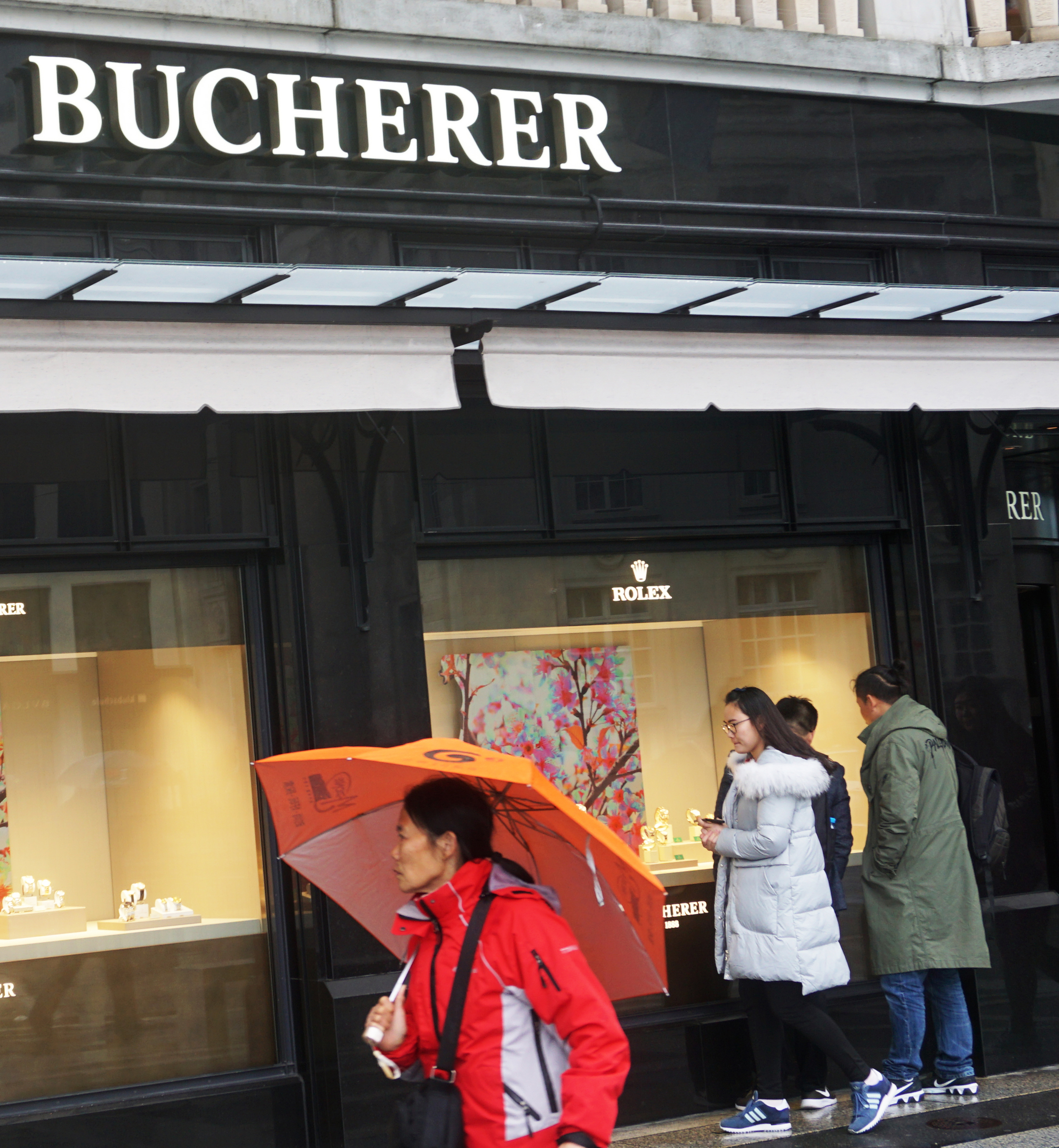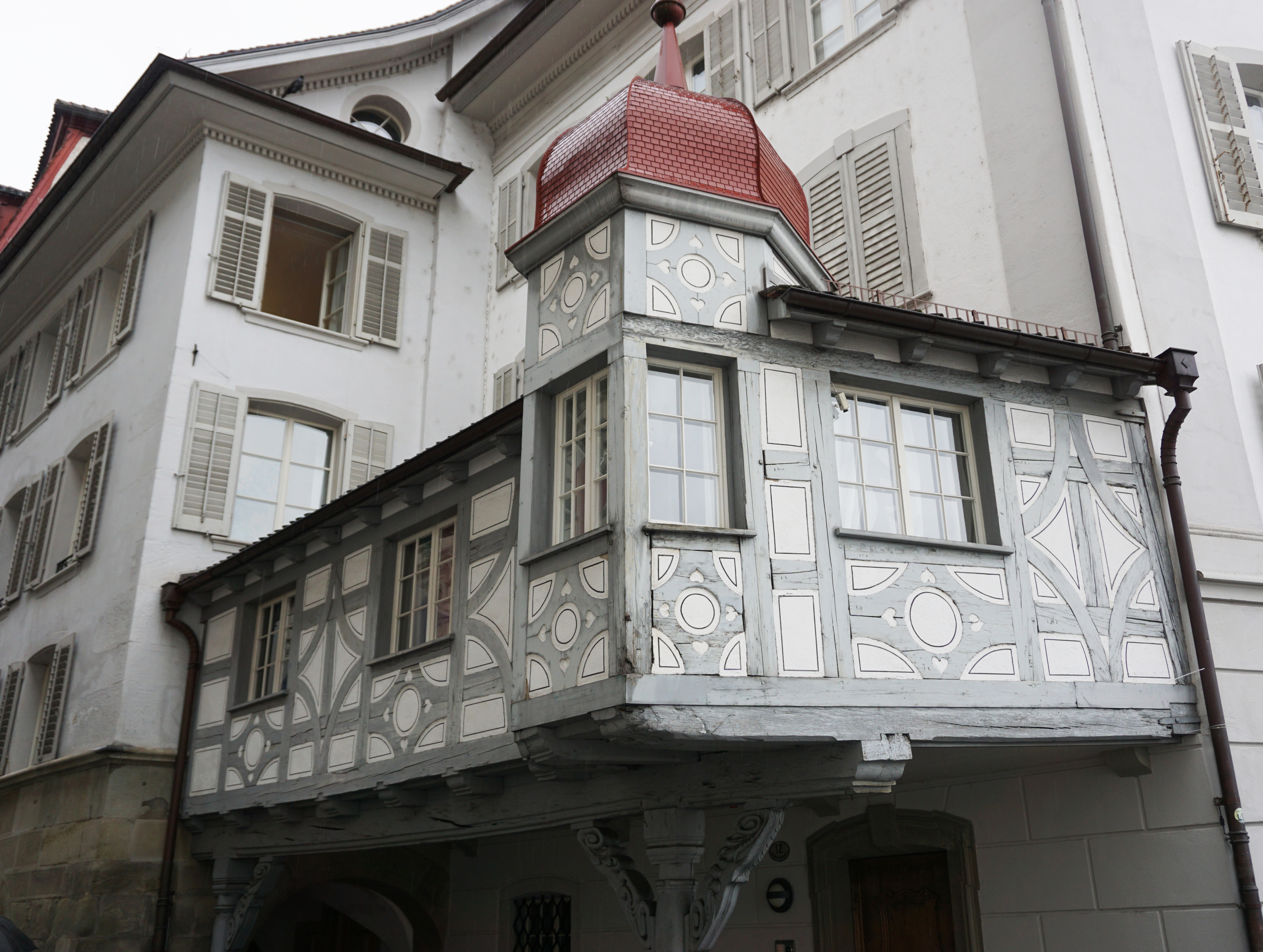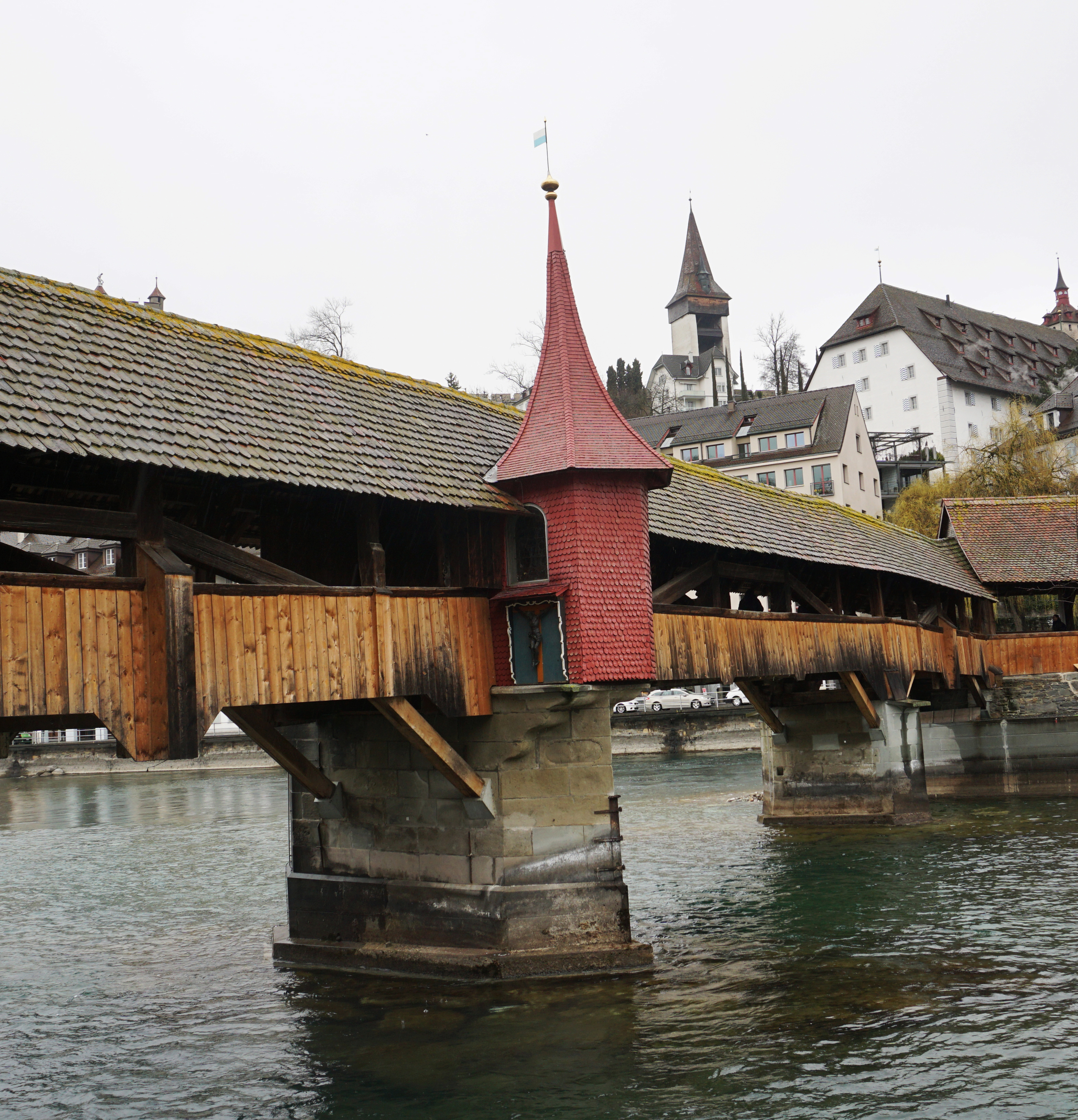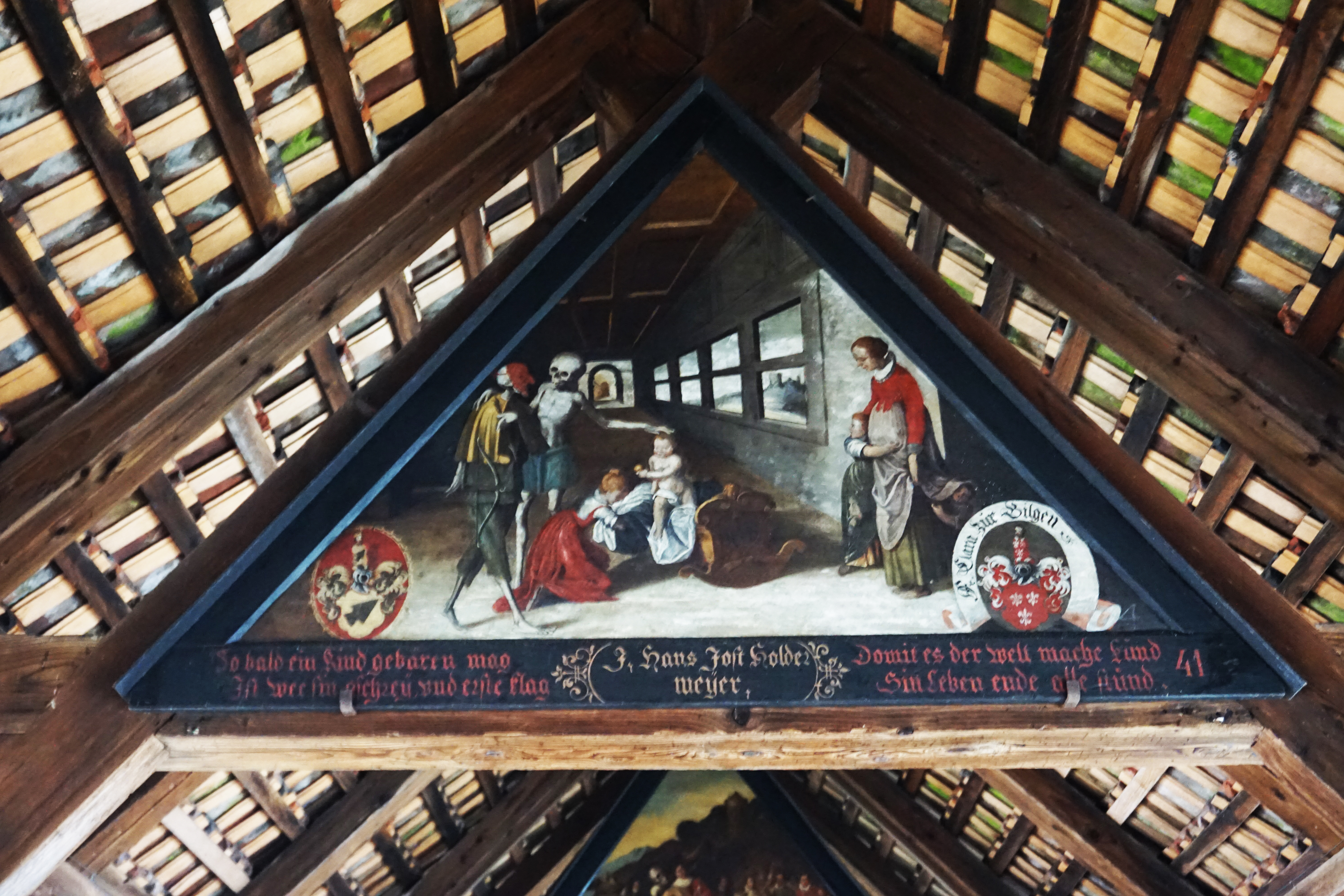LUCERNE, SWITZERLAND — The buses start arriving early. As many as 200 a day. The excited occupants — all Chinese — rush off into Schwanenplatz, this city’s main square, and dash towards the entrance of Bucherer, the legendary watchmaker that first opened its doors in 1888.
“This goes on all year long,” says Sonja, my tour guide. “In the summer months, I’ve seen 300 buses arrive here in one day.”
In a city with dozens of watch stores, Bucherer is the most popular — with the Chinese, at least.
“That’s because it opened in 1888 and the number 8 has great symbolism to the Chinese,” Sonja continues.
According to the Swiss-born Sonja, who speaks impeccable Mandarin, certain numbers — 0, 6, 8 and 9 — are auspicious to the Chinese because their names in Mandarin sound similar to words that have positive meanings.
“Last year over 300,000 Chinese visited Lucerne and they spent over $1 billion (U.S.) buying watches at Bucherer. The store had to hire 35 Mandarin-speaking sales people just to handle the influx. I know some Chinese who come here strictly to buy a watch at Bucherer and leave,” the guide tells me.
That’s a pity because if they would stay, they’d find Lucerne to be one of the most fascinating and beautiful cities in Europe. And much of Lucerne’s best features are just a few steps away from Bucherer’s main entrance.


Left: Chinese tourists love watchmaker Bucherer. Right: Old Town Lucerne is full of history.
For instance, on one side of the handsome Schwanenplatz I see beautiful Lake Lucerne and its breathtaking Alpine mountain backdrop. On the other side is the city’s charming Altstadt (Old Town), with its labyrinth of narrow streets that lead visitors on an historical journey back to when this was a simple trading post.
“And a lot of that trade, even back in the 15th and 16th century, was with China,” says Sonja, who says cargo unloaded off ships that came from Asia was moved across the lake and into nearby Italy — Milan is a two hour drive away.
“Lucerne has always had great relations with the Chinese and our favourite dessert (a cake called Läbchuechli) was first made with the ginger brought here from China. You can buy it everywhere in Lucerne,” she tells me.
Proving once again that good things come in small packages, compact Lucerne features some of the best-preserved Medieval architecture in all of Europe and its stunning setting amid snowcapped mountains is simply breathtaking.
Lucerne’s tranquil beauty even inspired England’s Queen Victoria to pay a visit in 1868. Her three-week stay at the Villa Vallis Hotel, which still exists, prompted many of her British subjects to also visit Lucerne and that touched off a hotel construction boom the likes of which the Swiss had never seen.

Above: Lake Lucerne is lined with many grand hotels that were built after Queen Victoria's visit.
“Most of the grand hotels standing along the lake promenade were constructed after Queen Victoria’s visit,” says Sonja, pointing to such legendary properties as the opulent Palace Luzern, the Grand Dame of Lucerne hotels, which looks like a fairytale castle standing along the shore. Interestingly, the Palace Luzern was recently purchased by a Chinese investor and is scheduled to undergo a major refurbishment.
At one time, there were over 9,000 hotel rooms in Lucerne, according to my guide, but now “we have about 4,000.”
And most of the time those rooms are full.
I follow Sonja into the charming Old Town and we stop to have lunch at the historic Hotel des Balances, which sits on the banks of the River Reuss. The elegant 18th-century building in which the boutique property is housed features a beautiful black and yellow tiled roof and its facade, like many other buildings in the Old Town, showcases some lovely wall paintings.
“The paintings were a symbol of wealth back when Lucerne was becoming very rich in Medieval times,” says Sonja.
The streets of the Old Town are always crowded.
“We have a population of 80,000 but we get nine million visitors a year,” says Sonja, who goes on to say “a third of our visitors come from Asia, a third from North America and the rest from Europe.”
As we walk, I can’t help but notice an inordinate number of fountains.


Above: Lucerne's of covered bridges are some of the most famous and treasured in all of Europe.
“Oh, yes,” says Sonja, “we do have a lot of fountains — there are 165 in the Old Town, alone.”
Lucerne is also well known for its foot bridges, which span the Reuss and connect the east and west sides of the Old Town. At one time there were three main bridges but only two still exist, the most famous of which is the Kapellbrücke (Chapel Bridge), which dates back to the 16th century. But first, Sonja is anxious to show me Spreuerbrücke (Spreuer Bridge), a smaller version of Chapel Bridge that was built in 1408.
Spreuerbrücke was destroyed by a flood in 1566 but rebuilt shortly after. Its most striking feature is the original medieval paintings that hang in its rafters.
“They depict the plague, which devastated Lucerne, and the skeleton figures in the paintings resemble death,” says Sonja.
According to the guide, the Spreuerbrücke actually sat outside the Old Town and it was from where people would toss their garbage into the Reuss. So it was not revered as Chapel Bridge, which still remains as the symbol of Lucerne.
From the Spreuerbrücke, I see a castle-like property sitting atop a nearby mountain, which Sonja identifies it as the Hotel Gütsch.
“It’s one of the most opulent hotels in Europe and it’s owned by a Russian. I’ll be visiting it later today because my daughter, who is now of legal drinking age, wants to have her first drink in the Gütsch,” smiles Sonja.
The views from the Gütsch’s terrace are supposedly the most spectacular in the city. The much smaller Villa Vallis Hotel where Queen Victoria stayed sits right next to the imposing Gütsch.
Chapel Bridge is crowded with lots of tourists when we arrive. From it I see the Old Town City Hall, and on the opposite shore the main train station and concert hall, home to the world renowned classical music Lucerne Festival — it features three main events at different times of the year. Lovely restaurants and English-style pubs also line the river banks.

Above: Original paintings adorn the covered bridges and have survived floods and fires.
“On a clear summer day those restaurant terraces are packed with people soaking up the sun,” says Sonja. Not surprising for a place known as the “City of Light.”
Most of Chapel Bridge, the longest covered bridge in Europe, was destroyed by fire in 1993 but a small portion of the original still remains — you can identify the old part because it displays the same Medieval paintings as the Spreuerbrücke.
A third foot bridge — the Hofbrücke — was torn down to make room for the hotels that were constructed after Queen Victoria’s visit.
As a matter of fact, Lucerne is currently experiencing a modern-day hotel construction boom, with many new properties being built in the Alpine terrain directly across the lake from the Old Town. Apparently Middle East investors from Qatar are pouring billions into the new Bürgenstock Resorts resort, which is tucked away in the Alipine mountains across from the Old Town.
Another major tourist attraction in Lucerne is the Lion Monument, which is located just a short walk from the Old Town. The impressive statue of a mortally-wounded lion was carved into a mountain in 1810 to honour the Swiss Guards who were massacred in 1792 during the French Revolution.
So impressive is this statue, it prompted Mark Twain to comment: “This is the most mournful and moving piece of stone in the world.”
When we return to Schwanenplatz, I see a lot of smiling Chinese streaming out of Bucherer admiring the shiny new time pieces on their wrists.
Take it from the Chinese, the time is right to visit Lucerne. •
Information
• The Lucerne Festival currently produces three festivals per year, attracting some 110,000 visitors annually. The largest festival is the Summer Festival which takes place in August and September.
• The best way to get around Switzerland is by train. The Swiss Travel System offers many different train packages which can be found on their new website: http://www.myswitzerland.com/en-ca/transport-travel/transport-travel-passes.html
• Air Canada offers direct flights to Zurich from Toronto and Swiss International Air Lines - http://www.swiss.com - runs daily service to Zurich from Montreal.
• Swiss Deluxe Hotels is a group representing 41 of Switzerland’s best hotels, including Lucerne’s Palace Luzern, and offers unique experiences in some of the most visited places in Switzerland. For information, go to http://www.swissdeluxehotels.com/en
• For information on Switzerland go to http://www.MySwitzerland.com and to order travel brochures about Switzerland, go to info.usa@switzerland.com
About the Author
Marc Atchison is a veteran journalist and a seasoned traveller with more than 20 years of travel writing experience. As the former Travel Editor of the Toronto Star, Canada's largest newspaper, and now Editor-in-Chief and Senior Writer for TraveLife magazine (Canada) and travelife.ca, Marc has been to over 100 countries in the world. Japan is one of his favorite destinations and he's been there on numerous occasions.